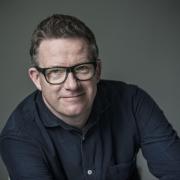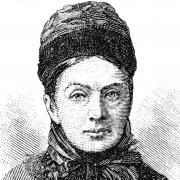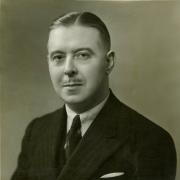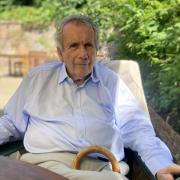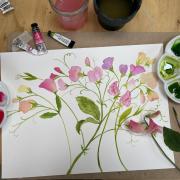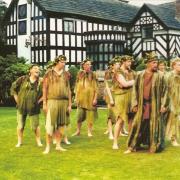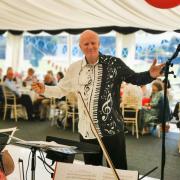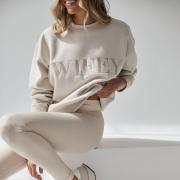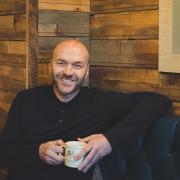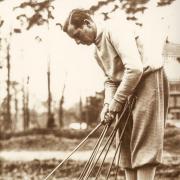Wilmslow portrait artist Peter Davis has achieved a place in the final line-up at this year’s National Portrait Gallery award, beating entries from across the world
Have you ever watched Portrait Artist of the Year? If not, you should. It’s absolutely gripping, you’ll be bellowing at the television before you know it, heartily disagreeing with the judges’ opinions and vehemently advocating for your own choice of winning portrait painter. In one hour, the show encapsulates everything that is glorious and important about art, as nine totally diverse artists, both professional and amateur, battle it out for the grand prize, and the audience debate which they’d have on their wall, and which doesn’t do it for them at all.

“It’s not for me,’ laughs Wilmslow-based artist Peter Davis. ‘I have actually been invited to enter a couple of times, and as a member of Contemporary British Portrait Painters I know many of the artists who have participated, but my style of portrait painting doesn’t really work in the format.
Peter is a hyper-realism portrait artist, and while his work would undoubtedly qualify him for entry into the competition, with contestants only having four hours per round to create a portrait from a live sitter, he wouldn’t really be able to show his true skill.
“It takes 60 hours plus to create a finished portrait,” he explains, “so not really PAOTY-friendly. “It’s hard; not just getting the likeness, but creating a narrative, telling the story, expressing something of what lies behind the image. This is what I really seek to achieve.

“It was that competition however that tipped my work in the direction I have now taken, however. When it first started, I was painting in a far more abstract form. I could see the power of the work being created and thought, you know, I should give this a go.”
Peter’s hyper-real style doesn’t stop him from entering his work into competitions, just not the sort with the TV-friendly format of Sky Art’s show. In 2021 he was shortlisted in the highly regarded John Moores Painting Prize, held at the Walker Art Gallery, in Liverpool, which is not restricted to portraiture but scoops up all forms of contemporary British painting.
It is this year however that his greatest triumph, to date, comes, with his portrait of Fahima earning him a place in possibly the most well-regarded and competitive contests in the global art world’s calendar – the Herbert Smith Freehills Portrait Award at the National Portrait Gallery.

“It’s so exciting,” he smiles. “The National Portrait Gallery is the globally recognised home of portraiture, and the Herbert Smith Freehills Portrait Award is the most prestigious competition in the field, showcasing the very best in contemporary portrait painting.
“There were almost 1,700 entries from 62 countries this year, so to make the final shortlist of just 50 paintings is a huge honour. I’m proud to be a part of it.”
Peter won his place in the final 50, which are on show at the National Portrait Gallery from July 11 until October 27, before setting off on a short national tour, with his diptych painting of Fahima Patel, a young Muslim woman Peter met while working in his ‘other job’, graphic design, for an advertising agency in Manchester.
“I met Fahima through my freelance work in graphic design, in 2023,” Peter explains. “She’s a graphic designer too, and is a lot of fun and very outgoing. I told her what I do and asked if I could paint her, and she agreed straightaway. I told her I wanted to explore the different hijabs she wears every day; she wears all these different coloured hijabs, and I was really interested by the changes from black to a coloured one to a white one, and I thought she looked amazing in it and was fascinated by how the different colours changed external perception of her.

“I’ve long been interested in the semiotics of clothing, how people can send a message, or portray a sense of themselves through what they wear. I painted Nathan Bryan, an actor and children's book author, who is really into his clothes and uses them to create a certain impression. I did it in the form of a triptych, but like one of those old-school flip books, where you have a head, a body and legs and can mix them up.
“With Fahima, I wanted to explore the sense of how when she wears black or white she might feel different, but also how the viewer of the painting responds to her differently.”
While Peter may work on a portrait for around 60 hours, luckily there is no need for his subject to sit for that long.
“I asked Fahima to sit for a couple of hours, and also took loads of photos, hundreds and hundreds. I asked a friend to hold a studio light and we played with lots of different compositions. There’s a traditional style of painting known as chiaroscuro, which is very much about dark to light, and looking at extreme lighting within a composition, and I wanted to incorporate that, too.

“Growing up in the UK, we’re taught certain things about colour; brides wear white, we wear black to funerals, so there were lots of layers I wanted to introduce. Fahima is a modern British Muslim, and for her there are no associations around whatever colour she chooses to wear, this is something we bring to our viewing of the wearer, not something Fahima chooses to project.”
Fahima is, understandably, quite thrilled with the portraits, and joyful that her portrait has achieved a place in arguably the world’s toughest portrait competition.
“She’s attending the preview in July,” Peter says, “and bringing her mum, which we’re all really looking forward to.”
As well as the work he does for his own joy, Peter undertakes commissions from a wide range of clients.
“People think portraiture is only for the famous, but this isn’t the case. Yes, I have been commissioned to paint subjects such as Andy Burnham, Mayor of Greater Manchester, but most of my work is private commissions for people aged anywhere from two to 82. A lot of people commission a portrait as a big birthday gift, or to celebrate a major milestone.
“I love getting to know my clients, spending time with them and observing their idiosyncrasies, how the muscles move in their face when they talk or laugh. I can take all that back to my studio and then get a true likeness, but with character.”





